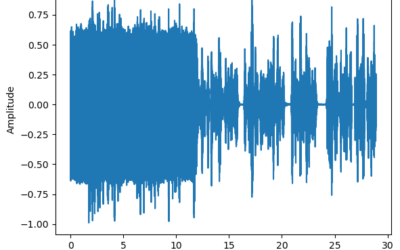Special Forces’ operational training overview
A closer look at how Special Forces’ operational considerations continue to be dominated by multi-lateral cooperation initiatives in both training and operational environments in order to develop interoperability and capacity-building, both at home and abroad.
The operational environment, as illustrated by ongoing coalition operations against the self-proclaimed Islamic State (IS) in northern Iraq and Syria, embodies a trend in which the international SOF community remains heavily involved in ‘train, advise and assist’ (TAA) operations for indigenous force elements.
Describing SOF contributions to Operation “Inherent Resolve,” which includes participation from USSOCOM; Canadian Special Operations Forces Command (CANSOFCOM); Australian Special Operations Command; Directorate of UK Special Forces; Norwegian Special Operations Command; and many other component commands from, e.g. Belgium and Denmark, defence sources explained to MT how the training environment has now heavily blended with the operational environment.
“The force multiplying effects of SOF, especially from NATO and other Non-NATO Entity partners such as Australia, can be perfectly demonstrated in the Middle East, where small training and advisory teams are deployed in direct support of local special mission units,” one defence source associated with NATO’s Special Operations Headquarters (NSHQ), based in Mons, Belgium, explained. “This is a classic example of irregular warfare where specialists can be deployed at reach to develop the capabilities of indigenous forces in the training environment, while also assisting in the practical execution of skills in an operational context.”
Examples include France’s 10th Air Parachute Commando unit and 1er Régiment de Parachutistes d’Infanterie de Marine (1 RPIMa), which, although operating under the guise of a Military Assistance mandate, are being used to provide intelligence-gathering capabilities to indigenous force elements.
Supporting Indigenous Force Elements
Operating under the command of the Hydra Special Operations Task Force, a 200-strong team of operators is being used not only to train indigenous units in direct action and special reconnaissance missions, but also to provide specialist advice in such areas as Site Sensitive Exploitation, EOD and Counter-IED.
Similarly, US and Canadian SOF are directly supporting indigenous force elements with small unit tactical training as well as more specialist Joint Terminal Attack Controller (JTAC) expertise for the provision of CAS – an area in which indigenous security forces continue to lag behind NATO and NNE SOF partners, defence officials from both countries admitted to MT.
On 10 December 2016, former US Defence Secretary Ashton Carter announced that DoD would be reinforcing its SOF footprint in Syria, with an additional 200 personnel to bring the total of US SOF in the campaign up to 500.
Speaking to delegates at the IISS Manama Dialogue in Bahrain, Carter described the future training directive for the Task Force, explaining how the deployment would feature, “trainers, advisers and explosive ordnance disposal teams to continue organising, training, equipping, and otherwise enabling [partner forces].”
Such a Concept of Operations (CONOP) also offers governments a solution for the deployment of SOF to operational theatres under a less aggressive posture, rather than combat operations, which invariably prove less popular to domestic audiences.
Netherlands SOF, for example, closed down a Special Operations Land Task Group in Mali during December 2016, tasked with peacekeeping operations, in order to enable a TAA operation in Iraq and Syria as part of Operation “Inherent Resolve.” A joint force element drawn from the army’s Korps Commandotroepen (KCT) and navy’s NL MARSOF units, is now operational at undisclosed locations in the Middle East, although no further details were provided to MT due to operational security concerns.
However, such demarkation between the training and operational environments can quickly lead to confusion, with international SOF teams sometimes being required to ‘lead in’ indigenous forces who can sometimes appear reluctant to spearhead combat operations, defence sources explained.
Referring to operational examples in Afghanistan over recent years, sources associated with NSHQ described to MT how coalition SOF components under the control of the International Security Assistance Force (ISAF) SOF Headquarters and NATO Special Operations Component Command-Afghanistan had regularly been required to take over leading roles during counter-terrorism (CT) tasks in particular.
“Indigenous force elements can sometimes become overwhelmed with rapidly evolving battle pictures and in the CT environment, it is important to move decisively and with purpose to achieve an objective,” another NSHQ-associated source highlighted, while referring to ongoing operations in Iraq against IS as well as recent campaigns in Afghanistan. “Any type of hesitation can be bad for a mission and the likes of NATO SOF amongst others, were frequently required to take over leading in assault teams from time to time. But as training and operational experience continues to be gathered, this is becoming less of an issue in a global context.”
Collaboration Between Training and Operational Environments
The divide between training and operations can be quickly crossed, as was the case in October 2015 when a US Army SOF operator was killed in action during an assault by a Kurdish Peshmerga special mission unit at an IS prison in northern Iraq. The operator was part of a US Special Operations Task Group, ordered to conduct a TAA operation against IS combatants.
Similar thoughts regarding collaboration between the training and operational environments are being expressed by US Africa Command-Special Operations Command, which is currently employing a less kinetic but equally effective training programme across West Africa to further enhance the small unit tactics, techniques and procedures (TTPs) of special mission units, SOF and CT elements.
The annual Exercise “Flintlock,” which places NATO and NNE SOF with African partners over February and March each year, launched its latest iteration on 27 February. The three-week exercise was hosted by a total of seven countries; Burkina Faso, Chad, Cameroon, Niger, Mauritania, Morocco and Tunisia. Additionally, force components from Algeria, Cabo Verde, Nigeria, and Senegal participated in the programme, which was executed by training teams from NATO and NNE partners. This include SOF teams from Australia, Austria, Belgium, Canada, France, Germany, Italy, Netherlands, Norway, Spain, the UK, and US.
According to the US AFRICOM Special Operations Command’s Forward North and West Africa Commander (and “Flintlock” Exercise Director), Col. Kelly Smith, the exercise is designed to, “…strengthen the ability of key partner nations in the region to protect their borders and provide security for their people.”
“The exercise bolsters partnerships between African, European and North American Special Operations Forces increasing their ability to work together in response to future crises,” Smith stated, explaining how participating force elements would be taught a “robust and diverse” set of skills.
Trained in direct action, special reconnaissance and military assistance operations, West African force elements receive high degrees of training in close quarter battle; small unit tactics; Hostage Rescue Operations; Long Range Patrolling; Combat Medicine; and Ground Assault Force operations. Additionally, units are being taught limited maritime and riverine skill sets, including visit, board, search and seizure operations; maritime interdiction; amphibious operations and CT serials.
Examples include the training of Burkina Faso SOF operators by the US Army’s 3rd Special Forces Group, which on 10 March conducted a combat medicine training package out of Camp Zagre, Burkina Faso, designed to better prepare the unit to respond to security and humanitarian crises, Flintlock officials from USSOCOM explained to MT. Similar combat medicine serials are being conducted by Canadian Special Forces in Diffa, Niger, where indigenous combat units are benefitting from the same instruction.
Elsewhere, N’Djamena in Chad hosted an Anti-Terrorism training event during Exercise “Flintlock” that included both military and civilian ‘security professionals’ in associateion with the Anti-Terrorism Assistance Programme of the US Department of State.
Training can also be conducted in order to fill capability gaps in state actor mission sets. For example, on 17 September 2016 SOF components from Bulgaria, Croatia, Hungary and Slovenia signed a Memorandum of Understanding to create a Multinational Special Operations Aviation Training solution, allowing the countries to band together their own limited fixed- and rotary-wing air support components for a wider capability. Defence sources explained to MT how this training solution, which is being supported by NSHQ, could later be extended to encompass an operational Special Operations Air Component for the various force elements.
Joint Training
Meanwhile, almost every SOF component command worldwide continues to conduct joint training exercises with partner forces in a bid to create or further cement international relations.
On 8 February senior defence officials from Australia and Indonesia conducted face-to-face meetings for the first time since the cessation of training between the country’s special forces, due to perceived cultural insensitivities by members of the former’s Special Operations Command, in November 2016.
Indonesian operators from the army’s KOPASSUS Command Component claimed to have stumbled across Australian training literature purporting to criticise Indonesia’s “Pancasila” ideology. The news represented a huge blow, both for KOPASSUS and the various force elements in Australia, including the Special Air Service Regiment and 1st/2nd Commando Regiments, which up to that point, had trained closely together, particularly in the area of maritime security and counter-terrorism.
In February, Australia’s Head of the Army, Gen. Angus Campbell, conducted a first reparative meeting with Indonesia’s Gen. Gatot Nurmantyo in Cilangkap, East Jakarta, in order to re-establish bilateral ties between the two Special Operations Commands. Defence sources explained to MT how the ban had only included reference to specialist courses such as linguist training, although they were unable to confirm when full training programmes are likely to resume.
Also in Asia Pacific, indigenous SOF units continue to use the training environment to promote their own organic capabilities as a ‘show of force’ to strategic enemies in the region.
On 10 February, the Pakistan Army’s Special Services Group (SSG) and SSG-Navy (SSG-N) force elements took part in the multi-national Exercise “Aman 2017” with a maritime counter-terrorism demonstration out of Manora, near Karachi, Pakistan. The exercise saw SSG and SSG-N operators conducting Helicopter Assault Force and Maritime Assault Force serials as part of a wider amphibious operation targeting terrorists holding a beachfront property.
Assault teams fast-rope rappelled from helicopters onto the beach, supported by airborne insertion via military freefall teams and maritime insertion by rigid hull inflatable boats and combat diving teams. Once the beach-head was secure, assault teams then demonstrated Military Operations in Urban Terrain (MOUT) TTPs to clear individual target buildings and compounds of terrorists.
This CT demonstration, according to senior Pakistan Navy officials, formed part of a wider multinational exercise designed to further develop counter-terrorism and counter-narcotics campaigns across the Arabian Sea and Asia Pacific.
Finally, the international SOF community continues to develop Centres of Excellence, some designated by the likes of NATO, to foster bilateral agreements with partner forces.
One example is the NATO Centre of Excellence for Military Freefall (MFF) in Turkey, which provides force elements from across the Alliance with specialist airborne insertion training. Similarly, smaller forces outside of NATO continue to adopt similar strategies with the likes of Kuwait’s 25th Commando Group conducting an MFF training programme with the Joint Special Forces Command of the Qatari Armed Forces. According to information made available to MT by Joint Special Forces Command officials, the training programme was conducted in January 2017 and featured a total of 94 serials in both classroom and practical environments. Parachute insertions concentrated on Medium Altitude High Opening and Low Opening descents at altitudes up to 12,000ft and included low light insertions.
In order for the international SOF community to remain current and up to speed across an ever-expanding spectrum of special operations mission sets, it is imperative that force elements continue bi-lateral training agreements in order to enhance existing and future skills and retain overmatch against adversaries.
Andrew White

























